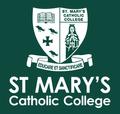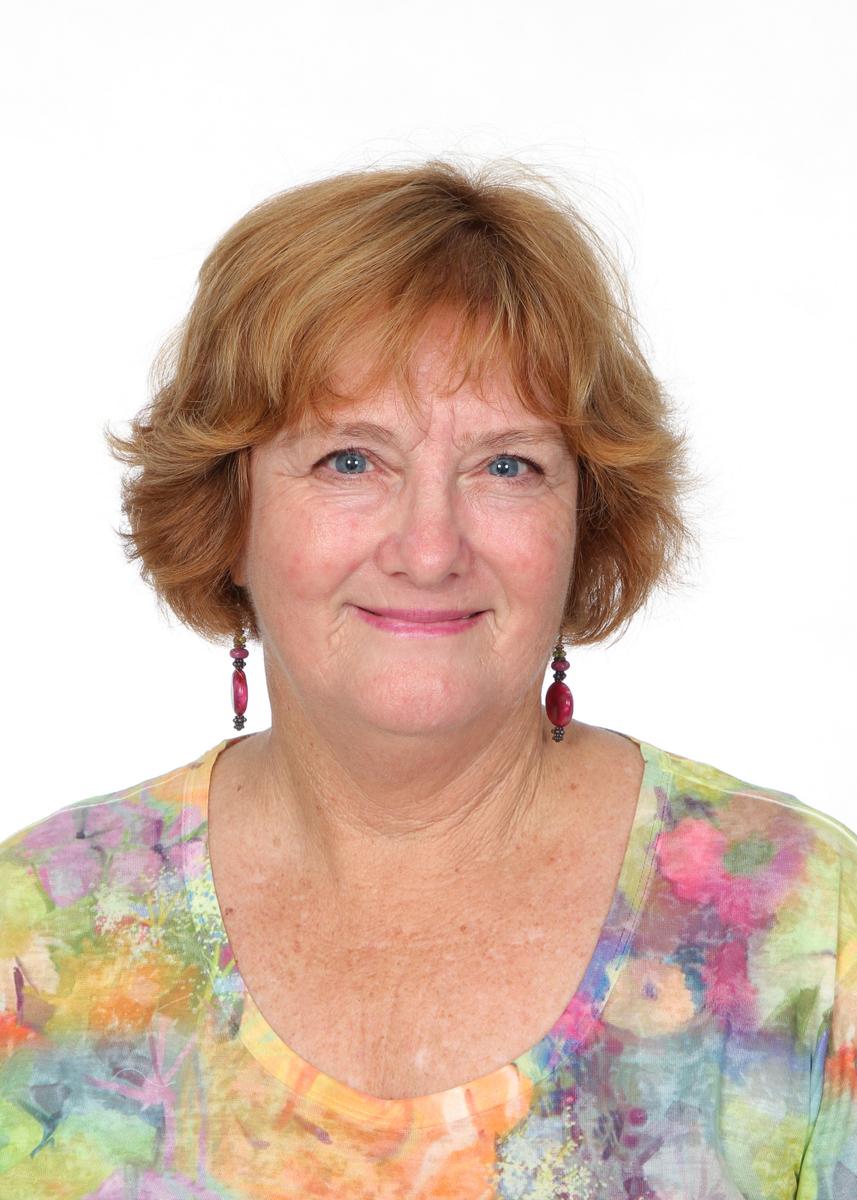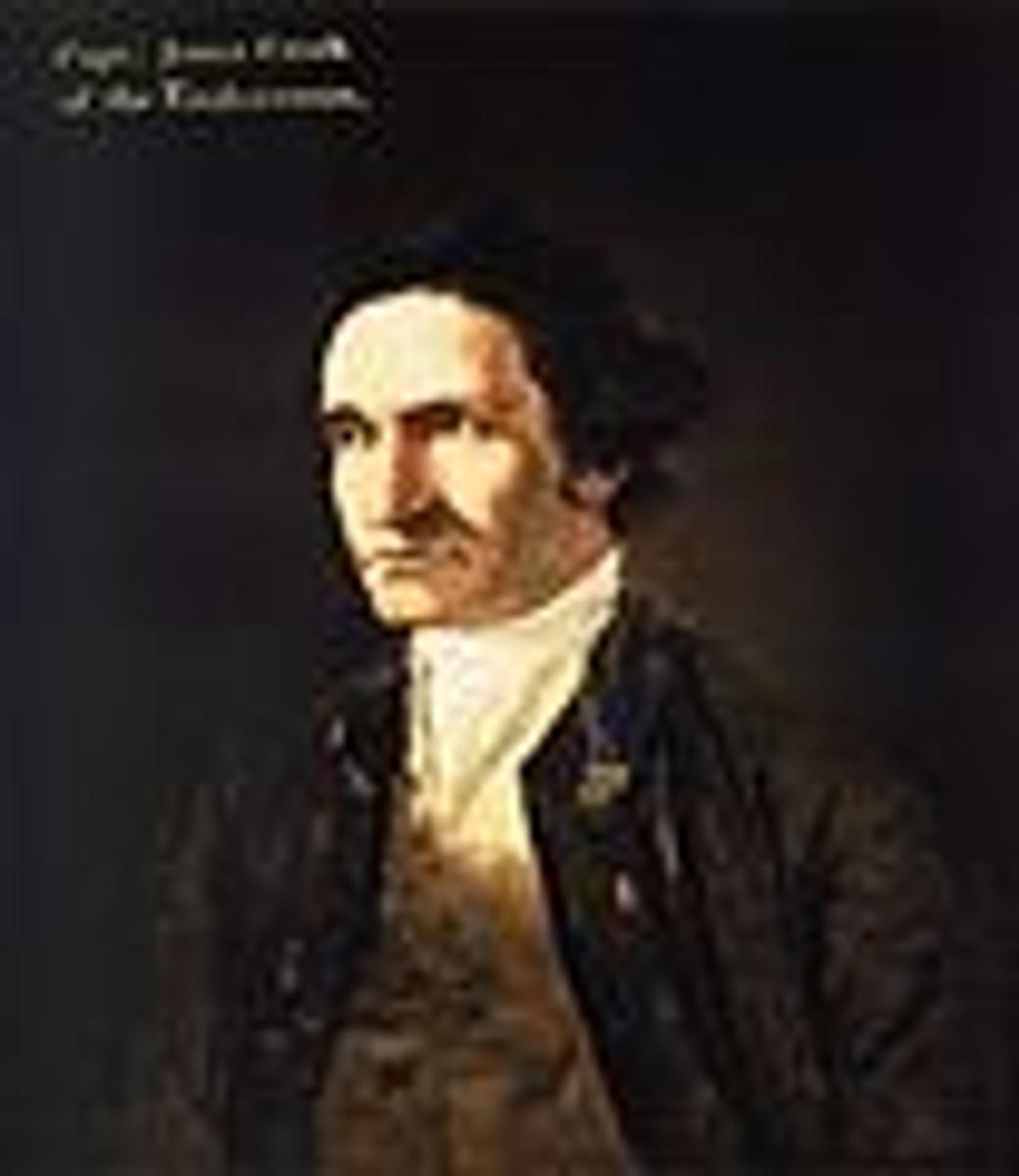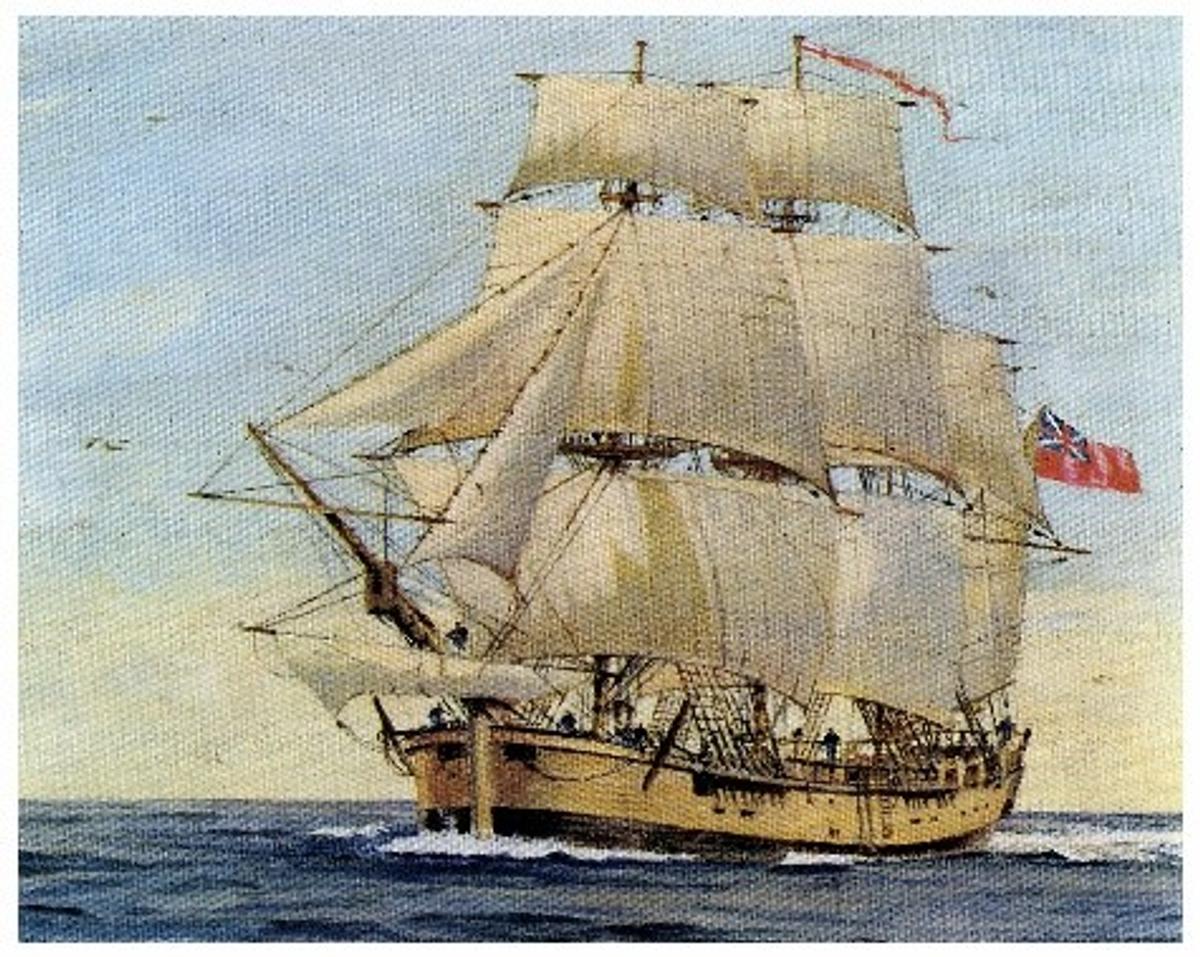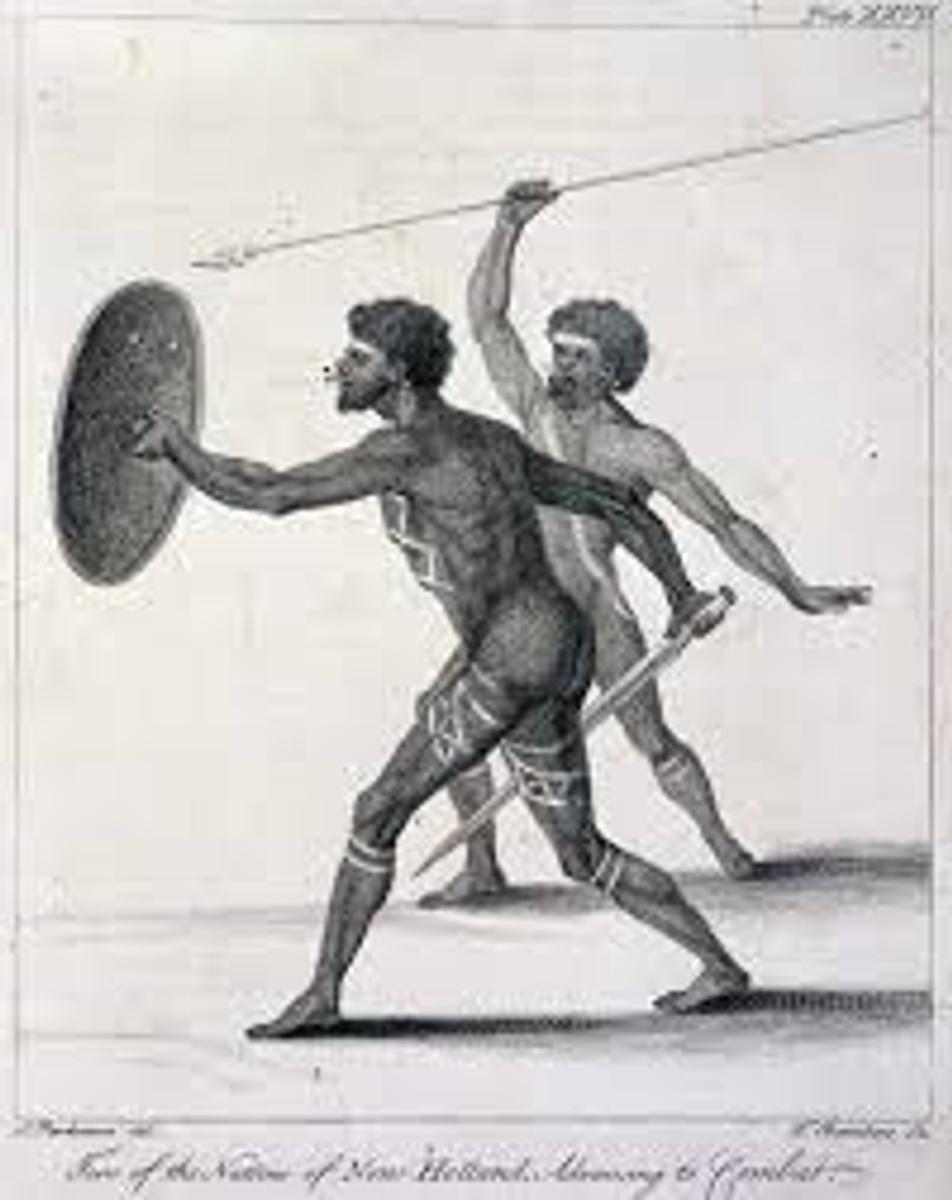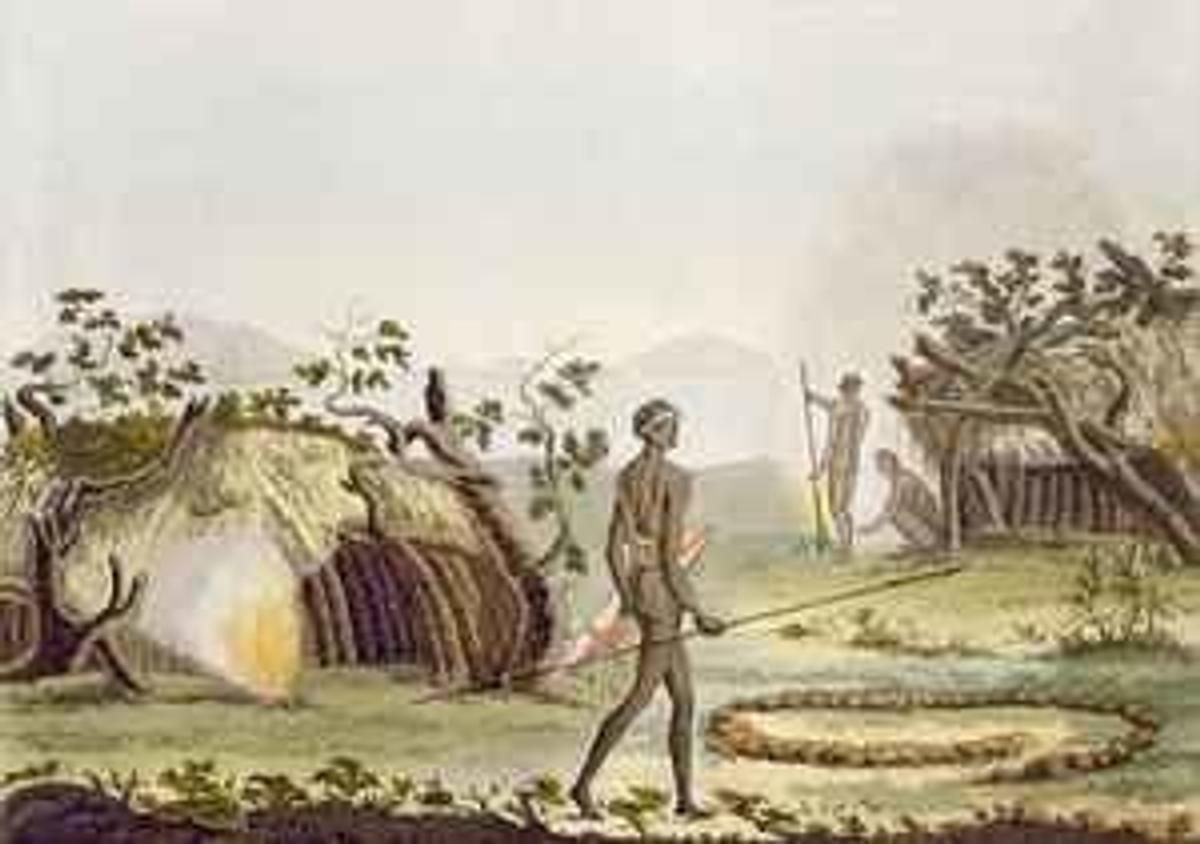250th Anniversary

Margaret Marton
Humanities Teacher
250th Anniversary of Cook’s Endeavour Voyage of Discovery -
A voyage from which we continue to discover
Part 2:
What perspectives do the journals of Cook and Banks provide about indigenous life before British colonisation?
Lieutenant James Cook’s Journal of the voyage on the HMS Endeavour from 1768 to 1771 is 753 pages long. While at sea Cook wrote in this journal every day and is an account of one of history’s greatest journeys of discovery. Included in this are the first detailed records of indigenous life in Australia before European colonisation.
“Cook’s journal was purchased by the National Library of Australia at auction for £5000 in London in 1923. It is among the Library’s most prized objects and one of Australia’s most significant historical documents”.
https://www.nla.gov.au/digital-classroom/senior/Cook/Indigenous-Response/Endeavour-Journal
Even though this journal is written through the perspective of a British man Cook did not hold the views of many powerful men at the time. Cook was a humble man whose achievements were due to his own hard work and abilities. As well, he had mixed with native peoples from North America, Tahiti and New Zealand, and greatly respected the Tahitian man Tupia travelling with them on the Endeavour. Thus, Cook was respectful of native people and had an advanced view for his time about human rights. Most of all Cook was scientific so his records are factual as he sees it. Banks too was very scientific and very open to new understandings. Thus, these journal entries are an important source of information concerning indigenous life in 1770.
As the National Library of Australia explains (about Cook’s Journal which also applies to Bank’s Diary)
“The journal provides a rare, firsthand account of some of the earliest interactions between First Nations peoples and Europeans in Australia. Journal entries…. give us insight into Cook’s feelings about who and what he was seeing, but they also reveal glimpses of the people watching and waiting for Cook and his men from the shore.” https://www.nla.gov.au/digital-classroom/senior/Cook/Indigenous-Response/Endeavour-Journal
Timeline for Captain Cook East Coast Voyage
Most of the following are exact copies of what Cook and Banks wrote. There are some issues in reading documents from so long ago. In this time the idea that we should all spell words in the same way, that is, have a dictionary of correct spelling, was just developing. Thus, many words are spelt differently even on the same page: eg smook and smoke. (Fitzsimons XIII)
19 April 1770 - Thursday: Land sighted
21 April 1770: On the third day they saw people on the white sand in the distance. Captain Cook wants to make contact with the “Natives”, but the winds were too rough and there was no harbour or bay for protection
28 April 1770 - From Banks Journal
“During this time a few of the Indians who had not followd the boat remaind on the rocks opposite the ship, threatning and menacing with their pikes and swords - two in particular who were painted with white, their faces seemingly only dusted over with it, their bodies painted with broad strokes drawn over their breasts and backs resembling much a soldiers cross belts, and their legs and thighs also with such like broad strokes drawn round them which imitated broad garters or bracelets. Each of these held in his hand a wooden weapon about 2 feet long, in shape much resembling a scymeter; wood smeard over with the same white pigment with which they paint their bodies”.
http://southseas.nla.gov.au/journals/banks/17700428.html
CONTACT at Botany Bay
From Cook’s Journal http://southseas.nla.gov.au/journals/cook/17700429.html
29 April 1770: “Saw…Several of the natives and a few hutts, women and children … to which place I went in the boats in hopes of speaking with them… as we approached the shore they all made off except two Men who seem'd resolved to oppose our landing - as soon as I saw this I orderd the boats to [stop] to speake to them but this was to little purpose for neither us nor Tupia [Tahitian priest] could understand one word they said”.
“We then threw them some nails beeds a shore which they took up and seem'd not ill pleased … I thout that they beckon'd to us to come ashore but in this we were mistaken for as soon as we put the boat in they again came to oppose us upon which I fired a musket between the two which had no other effect than to make them retire back where bundles of thier darts lay and one of them took up a stone and threw at us which caused my fireing a second Musquet load with small shott and altho' some of the shott struck the man yet it had no other effect than to make him lay hold of a Shield or target to defend himself”.
“emmediatly after this we landed …. they throw'd two darts at us this obliged me to fire a third shott soon after which they both (slowly) made off We found here a few Small hutts made of the bark of trees in one of which were four or five small children with whome we left some strings of beeds - a quantity of darts lay about the hutts these we took away with us - three Canoes lay upon the bea[c]h the worst I ever saw”
30 April 1770: “After searching for fresh water …we saw the strings of beeds we had left with the children last night were found laying in the hut this morning, probably the natives were afraid to take them away … explore the Bay - in the doing of which I saw severl of the natives but they all fled at my approach”
6 May 1770: Cook officially names Botany Bay - From Cook’s Journal
“The Natives do not appear to be numerous neither do they seem to live in large bodies but dispers'd in small parties along by the water side. those I saw were about as tall as Europeans of a very dark brown colour but not black nor had they wooly frizled hair, but black and lank much like ours - no sort of cloathing or ornaments were ever seen by any of us upon any one of them or in or about any of their hutts from which I conclude that they never wear any - some that we saw had their faces and bodies painted with a sort of white paint or Pigment . Altho I have said that shellfish is their chief support yet they catch other sorts of fish, some of which we found roasting on the fire the first time we landed,”
After 8 days in Botany Bay the Endeavour departs. The next stop was at Bustard Bay. Cook observed a harbour just north of Botany Bay which he called Port Jackson. Cook wrote he saw smoke all along the coast and even noticed people at Cape Byron. The Endeavour sailed into Queensland waters on 17 May 1770.
23 May 1770: Bustard Bay - From Cook’s Journal
“In the AM I went ashore. We had seen no people but saw a great deal of smoke we found 10 small fires in a very small compass and some cockle shells laying by them but the people were gone”.
10 June 1770: Cairns & Green Island
“In the night we saw several fires along shore and a little before noon some people. After hauling round Cape Grafton we found a large but not very deep Bay which I named Trinity Bay…. The East point of the bay bore a low green woody Island known …by the name of Green Island. I went ashore accompaned by Mr Banks and Dr Solander, the first thing I did was to look for fresh water… as we did not (find water) we continued.”
“few Minutes before 11pm when we had 17 fathoms and before the Man at the lead could heave another cast [to check the water depth] the Ship Struck and stuck fast on a coral reef!! …Cape Tribulation named because here begun all our troubles. Latitude 16° 6' So Long 214° 39' Wt”.
http://southseas.nla.gov.au/journals/cook/17700610.html
11 June 1770: Stuck on Reef / June 12 1770: Off the reef but in mortal peril
18 June 1770: Landed in Cooktown
After 23 DAYS in the harbour the Europeans have their first contact with local Indigenous people - ON THE INDIGENOUS TERMS. Cook had realised not to approach the “natives” but left them to approach the boat.
[More in next segment Part 3 – Cooktown Encounter]
22 August 1770 - From Cook’s Journal
“Now once more hoisted English Coulers and in the Name of His Majesty King George the Third took possession of the whole Eastern Coast from the above Latitude down to tis place by the name of New South Wales”.
- From Banks Journal
“Look’d for the Passage we expected to find between new Holland and New Guinea. At noon one was seen… we resolv'd to try it. In passing through, for it was not more than a mile in lengh before it widned very much, we saw 10 Indians standing on a hill; 9 were armed with lances as we had been usd to see them, the tenth had a bow and arrows; 2 had also large ornaments of mother of Pearl shell hung round their necks”.
http://southseas.nla.gov.au/journals/banks/17700821.html
23 August 1770 - From Cook’s Journal
“From what I have said of the Natives of New Holland they may appear to some to be the most wretched people upon earth, but in reality they are far more happier than we Europeans; being wholy unacquainted not only with the superfluous but the necessary conveniences so much sought after in Europe, they are happy in not knowing the use of them. They live in a Tranquillity which is not disturb’d by the inequality of the Condition”.
http://southseas.nla.gov.au/journals/cook/17700429.html
References:
Fitzsimmons, P. (2019). James Cook: The Story Behind the Man who Mapped the World. Hachette, Sydney.
http://southseas.nla.gov.au/journals/banks/contents.html http://southseas.nla.gov.au/journals/cook/contents.html
(Information hearing from ABC local radio comes from this site)
